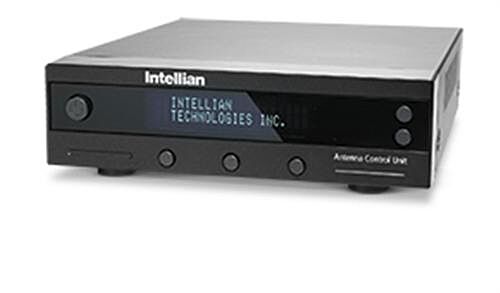Satellite TV on your boat is really awesome. And it’s not really a luxury… not any more than anything else on the boat anyway. Marine internet packages are expensive. A satellite TV package gives you a lot more options and is more reliable once you’re out on the water. And for the most part, the experience at the TV is the same as it is while you’re on land.
Once you get away from the TV, though… it can be quite different.
Marine satellite systems are more than a dish
On land, you have a satellite dish. It’s aimed once and that’s about all there is to it. If you’re using satellite TV on a boat, it takes a lot more. After all the boat is moving in three dimensions all the time. Making matters worse, marine satellite dishes are usually smaller than home ones.
Smaller?
Yes, smaller. I know that doesn’t make a lot of sense, but it’s true. The outer “white gumdrop” may seem larger, but home satellite dishes are about 39″ (100cm) wide. Most marine satellite dishes are about 24″ (60cm) wide. The extra space in that large dome is to let the dish move around as it needs to.
It takes complicated electronics
It takes a lot to make sure you’re always getting a good satellite signal. It takes moment-by-moment measurements of the signal and quick, tiny movements of the dish. And that gets to the heart of the question.
You need one of these

This is a typical “ACU,” or Antenna Control Unit. It’s the part of your marine satellite system that controls the dish. It provides basic information to the dish that helps it get its initial bearings. Using an ACU, you can tell the dish what kind of signals to look for, what services you’re using, and perform basic tests.
A lot of people ask why thy need a separate black box outside of the antenna. After all, the marine satellite antenna is housed in a waterproof housing. Why not put all the electronics there?
The answer to the question
Yes, you could put the ACU inside the dome. But then, of course, you couldn’t touch it. You wouldn’t be able to see what was going on with the device, and you wouldn’t be able to make any changes. That’s why the ACU needs to be somewhere you can see it.
You may be asking why you couldn’t use an app for something like this. After all it’s the 2020s, you should be able to use an app for pretty much everything. In this case, though, there’s one small problem.
Being out on the water, it’s a pretty good likelihood that you’re going to be more than a mile and a half offshore. That means cell service is going to be scarce and the boat may not be wired for internet. So while you could have an app, it’s not exactly clear how that app would communicate with the antenna. Instead of an app, you get an old-fashioned control box with real buttons and a wired connection to the antenna. That’s the most reliable way to get it done, and reliability is the name of the game when you’re on the water.
Get the marine satellite service you want and the expertise you need
Marine satellite television needs more than just a plain old satellite tech. Those overseas call centers aren’t going to help much either. You need an expert who knows how marine satellite works. That’s why you want to use people like Signal Connect. We have two decades of experience with marine satellite television. You’ll get a personal service advisor who knows what they’re doing and who can help you. You’ll always talk to the same person and you’ll develop a relationship.
It starts with a call to our main line at 888-233-7563. From there you’ll be connected with a professional who will take care of you from beginning to end. Call us now! If it’s after East Coast business hours, fill out the form below and we’ll get back to you, usually within 24 hours.




